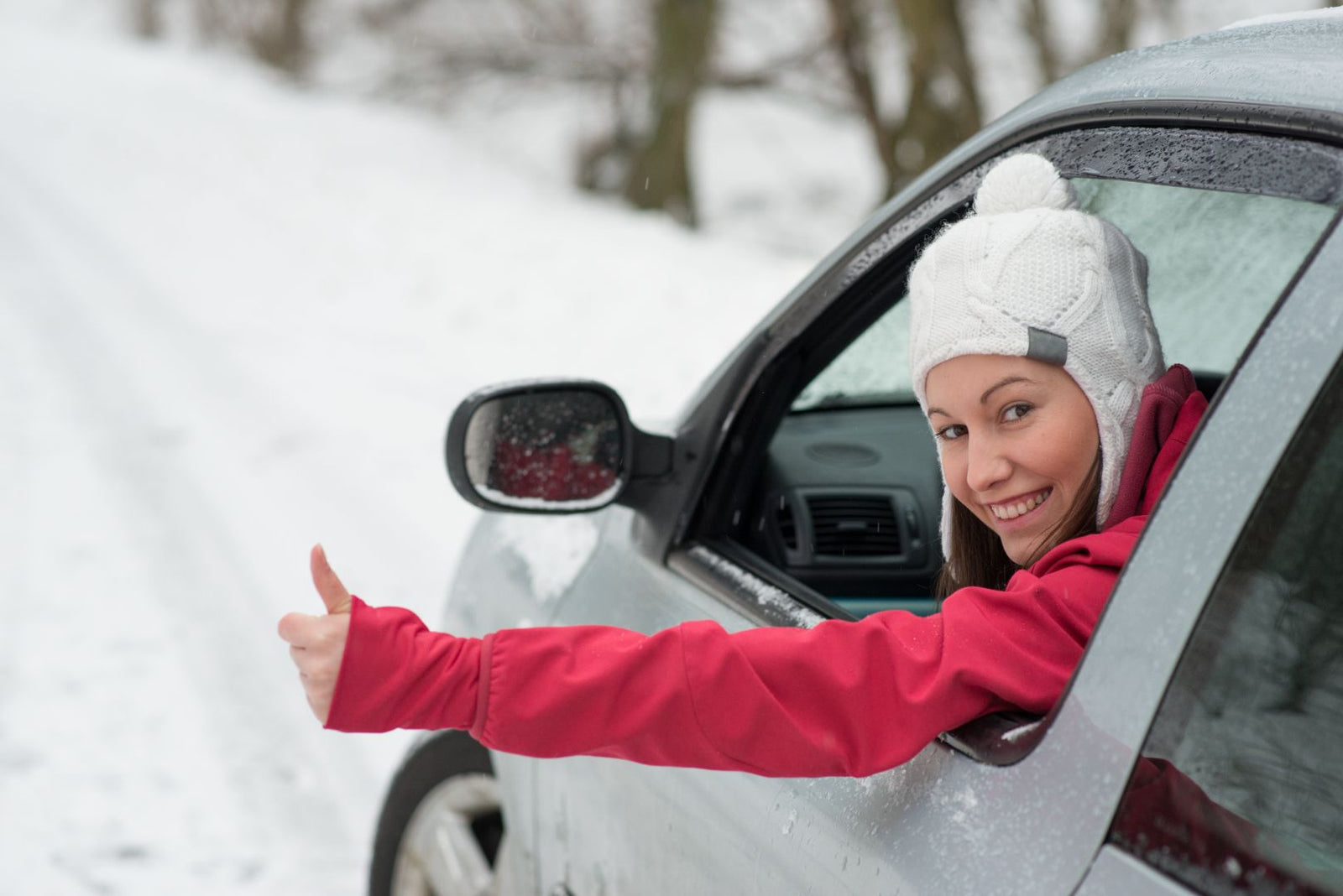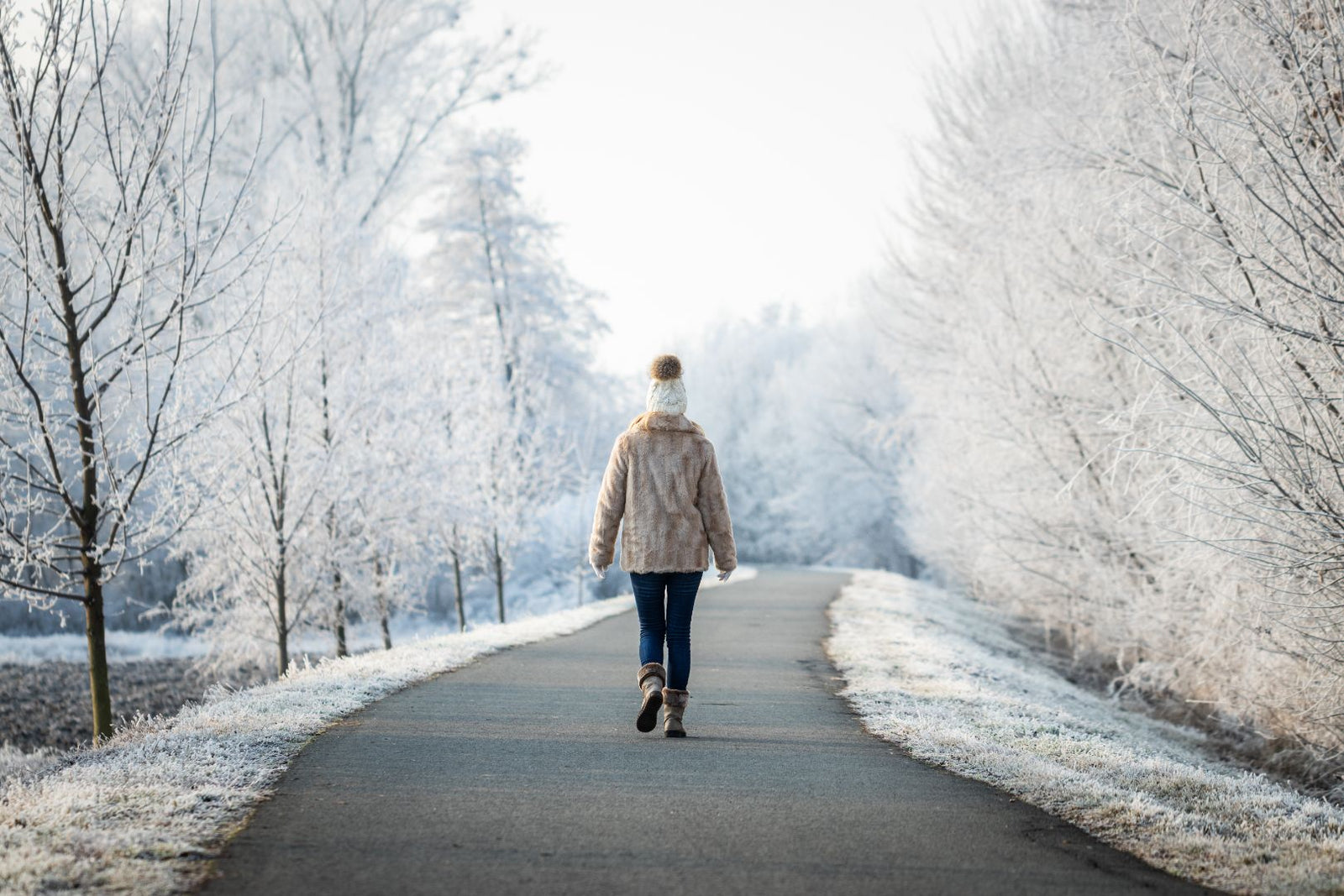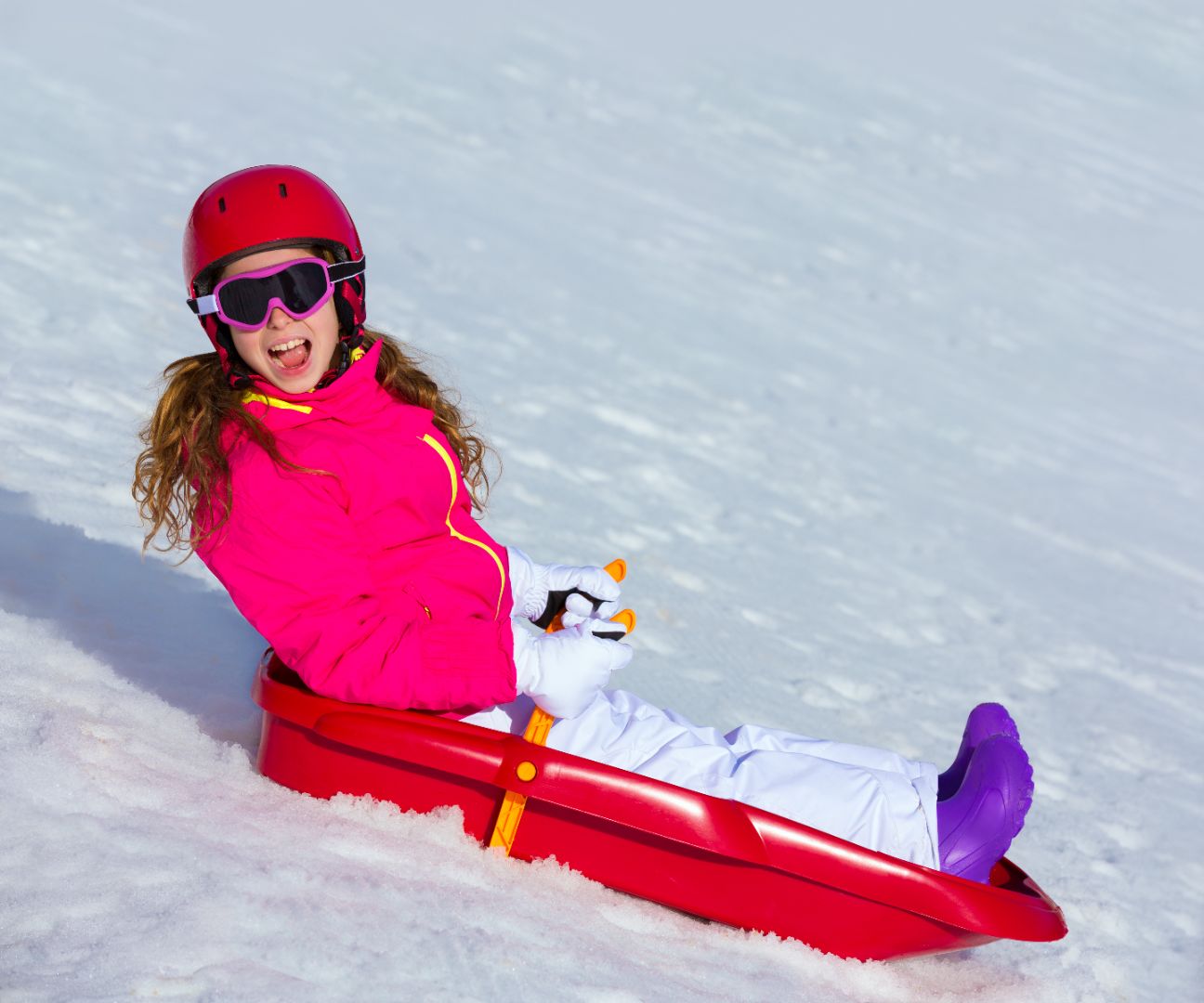
Winter Vehicle Safety Kit- Make 2024 The Year You Take Roadside Safety Seriously
December 29, 2023

Walking Off the Winter Blues
December 19, 2023

Enjoy Sledding in Safety This WInter!
November 24, 2023

Winter at the Warehouse: How to Stay Safe and Productive
November 20, 2023

Top Tips for Winter Running
November 10, 2023

What Should You Wear Outdoors at Different Winter Temperatures?
November 07, 2023

How to Shop for Winter Boots
October 20, 2023
A good pair of winter boots is essential for staying warm and comfortable in the wintertime. Nothing can ruin a day faster than having cold, wet feet- or even worse, frostbite! However, shopping for winter boots can be somewhat intimidating if you don’t know what you are looking for. In this article we will through what you should be looking out for when choosing a pair of boots, and why these things are important.

Employers: Increase Profits by Preventing Winter Slips & Falls
October 09, 2019
As it gets colder and the winter settles in, the number of slips and falls increases. Although everyone should take precautions to prevent winter slips and falls, employers need to be particularly aware of the dangers and prevention strategies for avoiding these sorts of accidents. Winter slips and falls are especially damaging for employers since these can result in increased downtime, more sick days, higher healthcare costs and workman’s comp, as well as overall reduced efficiency and profitd. The situation is especially acute in Canada and the Northern United States where the winter months are cold and icy - business owners in these regions need to be aware of the dangers caused by slippery surfaces and need to take preventive action.
Follow these simple precautionary tips to help prevent injuries from slips and falls in the workplace this winter:
Basic winter safety guidelines:
- Don’t get caught by surprise. Monitor the weather and changing conditions.
- Keep adequate supplies of snow and ice removal tools in accessible areas.
- Apply ice melt and use a shovel to keep walking areas clean and dry.
- Look for the areas where ice tends to form. Remove ice accumulations and apply additional ice liquefier to prevent buildup.
- Provide clear path markings and good lighting in parking zones and walkways.
- Clear ramps, elevations and steps that might not be visible in snowy conditions.
- Contract with a snow/ice removal company to keep your parking zone clear of ice and snow
- Place high quality, bevelled edge track off mats in walkways subjected to water or snow accumulation. Change floor mats regularly to ensure the place are dry.
- Employees who are often outside working should wear anti-slip ice cleats on their shoes or boots.
Create a fall prevention program:
- Set standards for the condition of your parking lot and paths and for wearing of appropriate footwear.
- Define everyone’s role in preventing falls and slips
- Communicate roles and standards to all staff
- Train workers who keep walkways clear.
- Check that standard are met and that the program works.
Train employees to:
- Wear suitable winter footwear which is well insulated, waterproof, thick sole, has a non-slip and a wide, low heel. Proper footwear in combination with ice grippers like ice cleats, crampons or ice grips are key to help improving safety while working on ice and snow.
- Use walkways that have been shovelled or salted. Do not encourage taking shortcuts over snow piles and in places where snow and ice removal is not possible.
- Test your travel path for slickness by sliding your shoe or boot on it before proceeding.
- When entering or exiting cars, use it for support. Don’t exit or enter your car too quickly.
- When entering any building, remove as much water and snow from boots as possible so that it does not create wet, slippery surface indoors.
- Spread sand or salt or liquefiers when you see icy spots. You can help to reduce the number of slips and falls by taking safety precaution.
- Do the penguin shuffle. – Walk flat-footed. – Take short steps to maintain your centre of balance over your feet. – Keep your head up and don’t lean forward. – Walk slowly. Never run on snow- or ice-covered surfaces.
To reach your employees with creative solutions on safety habits, train your employees to take precautions when working on the job. Create workshops to give your employees practical knowledge on how to respond to slip accidents. Also make it mandatory to use anti-slip ice grippers when working on the work to prevent slips and falls on icy surfaces – it’s small investment that will surely have a big impact on winter safety.

10 Tips to Avoid Injuries this Winter
October 09, 2019
The vast majority of us have experienced firsthand or seen somebody take a painful fall in the winter. Winter slips and falls can happen Regardless of whether it's almost imperceptible ice on your entryway steps or that tricky oily floor surface close to a passage to the outside world that could serve as a hockey arena, the potential outcomes of ending up on your back more than your feet this winter appear to be interminable.
All over the United States and Canada, slips and falls are the reason for over 300,000 serious wounds and 20,000 deaths per year. The level of these cases is marginally higher in zones with extreme winter climate: for instance, during a year ago's abnormally troublesome winter, 33% of labourer's remuneration cases recorded in the Midwest referred to slipping and falling as the reason for their wounds and lost time from work. Altogether, slip and fall cases represent 64% of all winter climate damage guarantees, a number that has all the earmarks of being developing: from 2013-2014, the quantity of these multiplied from the earlier year, making up 29% of all specialist's remuneration cases documented over the period of the season.
Keep these 10 tips in mind to help reduce the chances slips and falls this winter:
- Parking lots are one of the most common places for people to fall in the winter, so be extra careful when getting in and out of vehicles and moving across icy parking lots. Whenever possible, utilize the vehicle for help and stability when entering and exiting.
- Keep in mind: Ice and snow mean "move slowly!". Take your time and move carefully on slippery surfaces.
- Wear the right footwear with good treads and winter ice cleats. Ice grips with ice piercing spikes are a great way to help improve traction on icy and snow.
- Watch for slippery surfaces when you are entering or exiting your home, office or the shopping mall. Often high traffic entryways are prone to becoming slippery as the snow is compacted.
- Try to avoid carrying too much in hands or overloading yourself with heavy bags. Carrying too much will reduce your ability to keep your balance and slow your reaction speed in the event of a slip. Best practice during the icy winter months is to keep it simple and carry only a shoulder bag or backpack with minimal weight.
- Watch out for black ice, especially at night or in low light visibility conditions when you are least expecting it.
- Report any slippery untreated surfaces to your local municipality or building’s maintenance team. Awareness and prevention are key for helping to reduce injuries from slips and falls in the winter.
- When in doubt about whether or not a surface is slippery, tap or slide your foot on the surface before proceeding.
- Walk as level footed as possible when moving over icy surfaces and try to keep your weight centered and balanced.
- Try to avoid uneven surfaces and stairs with ice on them. Better to take the long way rather than risk and injury climbing a dangerously icy stairway.
Slips and falls can occur anywhere, therefore during the winter months it is important to stay vigilant and to be careful when moving on slippery surfaces.

Winter Safety: Prevent Slips & Falls During Icy Weather
October 09, 2019
How to stay safe when the sidewalks and walkways turn slick.
Winter is just around the corner. The frigid temperatures can be more than uncomfortable. Cold air can also be a danger to your health, especially when it's accompanied by precipitation that can cause you to fall. Even the slightest amount of snow or ice can make the sidewalks, parking lots, and driveways treacherous.
In 2017, slips and falls were the most common cause of injuries in Canada, according to a report published by the Canadian Institute for Health Information. Every day, more than 1,800 Canadians are sent to the hospital because of falls. The average length of a hospital stay for a fall is just over 14 days compared to 7.5 days for other medical reasons. Injuries from slips range from broken ankles to serious head injuries and even death. In January of last year, a 60-year-old Calgary man died after falling on an icy sidewalk and sustaining a head injury.
Although falls are the most common amongst older people, anyone can suffer a fall. Fortunately, there are things that you can do to reduce the likelihood of a fall. Here are some ways to keep your balance on snow, sleet, and ice.
Don’t Rush
During the wintertime, leave for work a couple of minutes early so that you won’t be rushing over slick surfaces. Maintaining a brisk pace during wintry conditions can increase the chance of falling. When you walk slower, you’ll be able to react to changes in traction a lot quicker. So, slow down and take deliberate, short steps over the ice and snow. Avoid shortcuts across the ice. When the weather is bad, don’t run across the street to beat traffic or try to catch a departing bus by running after it. If you do find yourself rushing often, at least choose shoes with an anti-slip shoe grip.
Pay Attention
Many falls are the result of simply not paying attention. One of the easiest ways to avoid falling during winter is to pay attention to where you are walking. Look at the sidewalk in front of you. Don’t get distracted with a cell phone while walking on snow or ice. Be aware of the fact that you could quickly slip on a concealed patch of black ice. Walk consciously and wear ice cleats for boots.
Wear The Right Footwear
When it comes to preventing slips and falls during icy weather, the first thing that you should start with is your shoes. High heels and smooth soles provide little traction on snow and ice. These shoes should not be worn on slippery surfaces. Even proper winter boots often lack grip. Researchers from the Toronto Rehabilitation Institute recently researched how well winter boots sold in Canada prevent falls on ice and snow. Only nine out of 98 different models of boots passed the test. So extra care should be taken when selecting your next pair of boots since the majority of winter boots sold online or through retailers will not provide sufficient grip on snow and ice.
What kind of shoes should you wear in snow and ice? A pair of good ice cleats or crampons are a MUST when it comes to getting traction walking during icy and snowy conditions. We suggest choosing a pair that are designed for everyday use like the ICETRAX Tungsten Grip Pro traction aids – they fit most types of footwear for both men and women, and don’t fall off easily. Plus, the reflective heel makes ICETRAX ice cleats perfect for nighttime use.
Do Some Strength Training
Strength training can help keep nasty slips at bay. Exercise is a proven way to prevent falls. Stronger muscles help keep us upright and reduce the likelihood of slips and fall accidents. Strong, large muscles can buffer the impact of a fall and help prevent your joints and bones from cracking.
So, make sure you hit the gym regularly and include strength training in your routine. What exercises are best? Try lunges and squats. These exercises work the glutes, quads, and hamstrings — muscles that you will need to stabilize yourself with if you fall. When these muscles are stronger, it makes it much easier for you to catch yourself before a fall.
Anticipate Slippery Surfaces
Be aware of what surfaces are likely to be slick. Remember that ice can hide under slush or snow. Black ice is especially dangerous — it can cause you to quickly fall without any warning at all. This kind of ice is more compact than normal ice. It is also very smooth and clear. Black ice can is most likely to be found early in the mornings, in shady areas. That is because the sun shines during the day and melts the snow; then it refreezes at night resulting in a clear patch of ice. Black ice is most dangerous when water is present as this makes it very slippery. So, in the mornings, keep an eye out for black ice. Avoid areas where there is standing water and always wear shoes specially designed for winter conditions, such as ice cleats.
Try Yoga
Yoga can improve balance and coordination — both of which help prevent falls. Being flexible can help keep you upright if you begin to slip on the ice. A recent study found that basic yoga poses help enhance flexibility and increase confidence in walking and balance in older women. Yoga can not only help reduce the likelihood of falling on ice and snow — but, it can also make you feel less anxious about walking on these surfaces.
Even if you don’t fall, you could pull a muscle in your legs or back if you lose your balance and tense up. Being flexible will help reduce the likelihood of an injury. Flexibility combined with ice grippers for shoes can go a long way towards preventing winter slips.
To sum things up, the best way to avoid falls this winter is to stay in shape, pay attention, take it slow, and use ice cleats for shoes.

